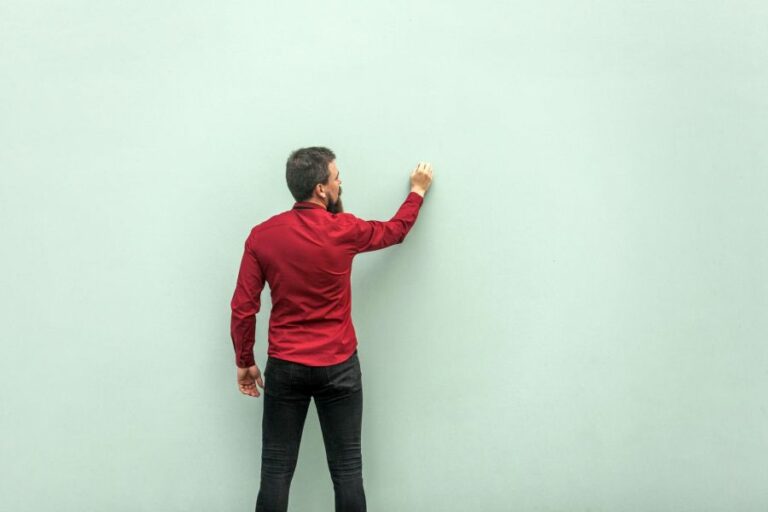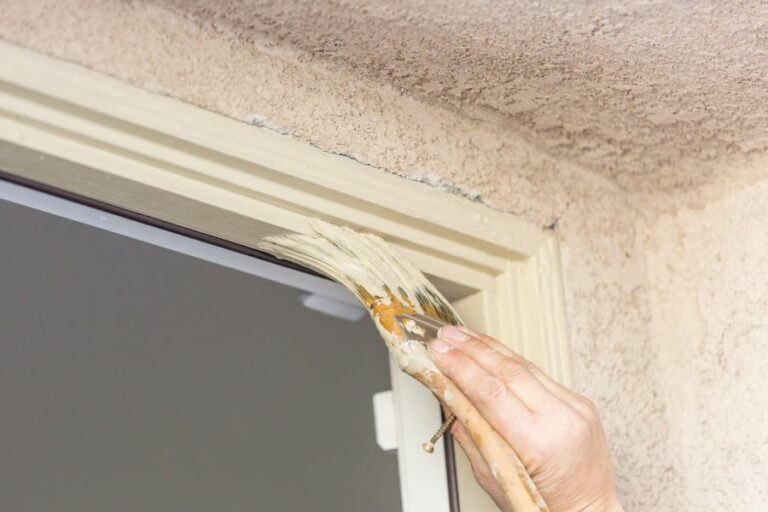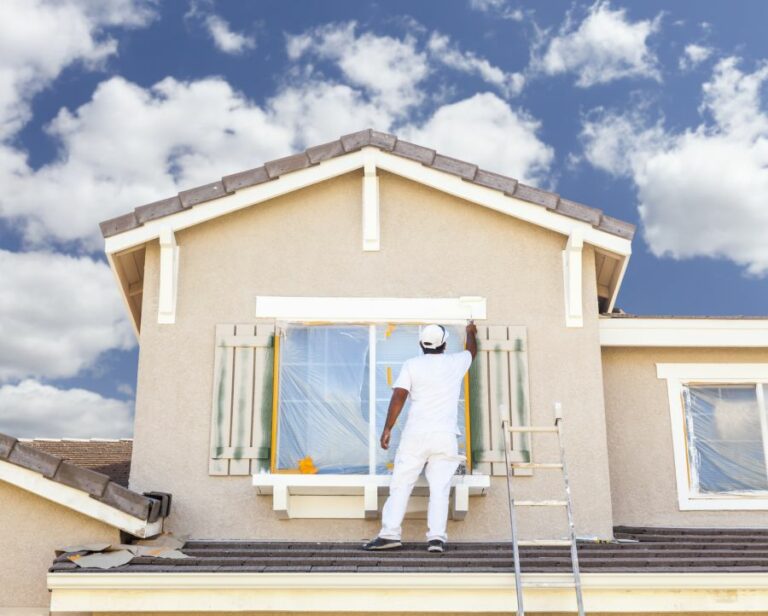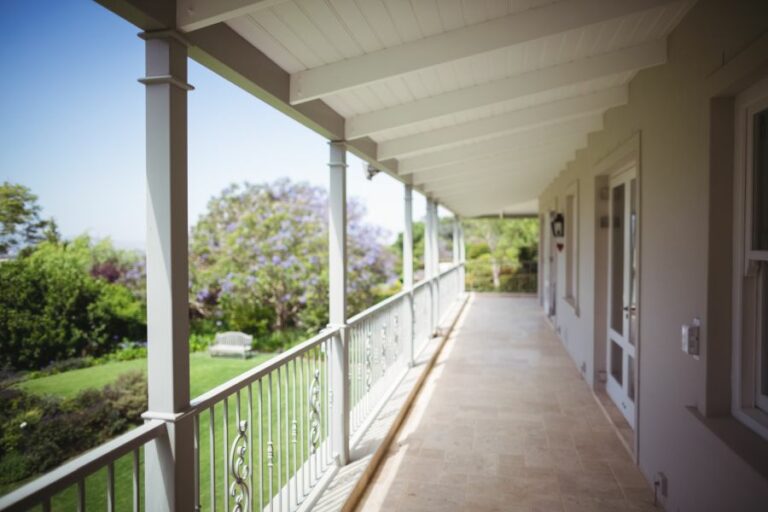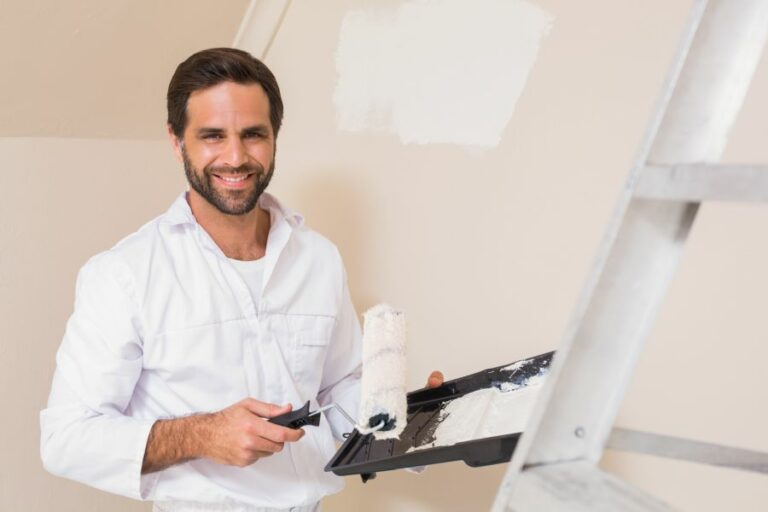All-Around Pressure Washing Outdoors. What Pros Say
Pressure washing is a fantastic way to revitalize and restore the beauty of various exterior surfaces around your home, business, or any outdoor area. With a wealth of experience, we can confidently say that we have the expertise to tackle all types of cleaning challenges that you might be facing. From dirty driveways to grimy gutters, we are fully equipped to handle it all, ensuring your space looks sparkling clean.
All-around pressure washing outdoors:
Pressure washing outdoors is an effective method for maintaining a clean and pristine exterior, improving aesthetics, enhancing property value, extending surface life, and ensuring better health and safety. It involves the use of appropriate equipment, techniques, and safety measures to remove dirt, grime, and stains from various surfaces.

Dive deeper into the world of outdoor pressure washing! Discover the various surfaces it can transform, best practices for tackling tough stains, and essential equipment to achieve an all-around sparkling clean. Unveil your property’s potential read on and get ready to shine!
Contents
- 1 Comprehensive Outdoor Pressure Washing Services
- 2 Optimal PSI Range for an Efficient Pressure Washer
- 3 Pressure Washer: Areas to Avoid Usage
- 4 Alternatives to Using a Pressure Washer
- 5 Is 2000 PSI Sufficient for Driveway Cleaning?
- 6 Comparing Power Washers and Pressure Washers
Comprehensive Outdoor Pressure Washing Services
Maintaining a clean and pristine exterior for your home or business is essential for aesthetic appeal and overall property value. One of the best ways to achieve this is through pressure washing, an effective method of removing dirt, grime, and stains from various outdoor surfaces.
• Benefits of Pressure Washing Outdoors
There are several advantages to incorporating pressure washing into your regular maintenance routine. These include:
– Improved Aesthetics
Pressure washing can refresh the appearance of your property by removing unsightly dirt, grime, and stains from surfaces such as brick, concrete, and siding.
– Enhanced Property Value
A well-maintained exterior can increase the value of your property and make it more attractive to potential buyers or tenants.
– Extended Surface Life
Removing harmful substances like mold and mildew can prevent premature wear and tear on various outdoor surfaces, ultimately extending their lifespan.
– Better Health and Safety
Eliminating potentially hazardous substances like mold, mildew, and algae can improve overall air quality and help prevent slipping accidents on wet surfaces.
• Pressure Washing Equipment
To achieve the best results, it is essential to use the appropriate pressure washing equipment for your outdoor cleaning needs. Here are some options to consider:
– Pressure Washers
Pressure washers come in a variety of sizes and strengths, typically measured in Pounds per Square Inch (PSI). For most residential applications, a washer with a PSI between 2,000 and 3,000 is suitable. For more substantial tasks or commercial usage, you may need a washer with a higher PSI.
– Nozzles and Attachments
Different pressure washer nozzles allow you to control the angle and intensity of the water spray, while various attachments can help you access hard-to-reach areas or add cleaning solutions to your wash.
– Cleaning Solutions
Using specialized pressure washing detergents or degreasers can help break down stubborn dirt, grease, or grime, making it easier to remove during the washing process. Always follow the manufacturer’s recommendations for using cleaning solutions with your equipment.
• Pressure Washing Techniques
Proper technique is crucial for achieving the best results and avoiding accidental damage to your property. Here are some expert tips to follow:
– Safety First
Before starting any pressure washing project, ensure you are wearing appropriate safety gear, such as gloves, eye protection, and closed-toe shoes. Also, ensure the area is clear of any potential hazards or obstacles.
– Test Surfaces
Before pressure washing an entire surface, test a small, inconspicuous area to ensure the pressure and technique you are using will not cause damage.
– Use the Appropriate Pressure
Start with lower pressure and gradually increase as needed to remove dirt and grime effectively without causing damage to your surfaces.
– Proper Distance
Maintain a safe and effective distance between the pressure washer nozzle and the surface you are cleaning. For most applications, a distance of 6 to 12 inches is suitable.
– Consistent Movement
Keep the pressure washing stream moving in a consistent, overlapping pattern to prevent streaking or damage to the surface.
– Rinse Thoroughly
After washing, make sure all surfaces are thoroughly rinsed and free of any remaining cleaning solution or debris.
• Pressure Washing Safety Precautions
Pressure washing can pose safety risks if not handled correctly. Here are some safety tips to keep in mind:
- Never point the pressure washer nozzle at yourself, others, or animals.
- Use caution when operating a pressure washer on a ladder or elevated surface, as the force of the spray can cause you to lose your balance.
- Make sure all electrical connections and outlets are protected from water during the washing process.
- Avoid using pressure washers in enclosed spaces, where harmful fumes from gasoline-powered models can build up.
- Follow the manufacturer’s guidelines for the safe operation and maintenance of your pressure washer.
• Conclusion
Pressure washing is an excellent tool for maintaining the appearance and longevity of your property’s exterior surfaces.
By selecting the appropriate equipment, utilizing proper techniques, and adhering to safety precautions, you can effectively and safely clean various outdoor surfaces, improving both the aesthetic appeal and overall value of your property.
Optimal PSI Range for an Efficient Pressure Washer
A pressure washer is a valuable piece of equipment for various cleaning tasks around the home, garden, or workplace. The machine uses a high-pressure stream of water to remove dirt, grime, and stains from various surfaces.
The power of the water is measured in pounds per square inch (PSI), which determines the cleaning capacity of the pressure washer. Choosing the best all-around PSI for your pressure washer can be challenging, as the ideal PSI varies depending on the cleaning job at hand.
• Understanding PSI Ranges and Their Applications
– 1,000 – 1,900 PSI: Light-Duty Cleaning
Pressure washers with 1,000 to 1,900 PSI are ideal for light-duty cleaning jobs. These models are suitable for residential use, and their primary applications include cleaning outdoor furniture, small decks, patios, cars, bicycles, and small grills.
– 2,000 – 2,900 PSI: Medium-Duty Cleaning
Medium-duty pressure washers have PSI ranges between 2,000 to 2,900. They are great for homeowners who require more cleaning power for moderately challenging tasks. Common applications include washing cars, boats, driveways, fences, sidewalks, and exterior siding.
These are favored by homeowners due to their versatility, and typically, such pressure washers come in both electric and gas-powered models.
– 3,000 – 4,000 PSI: Heavy-Duty Cleaning
Heavy-duty pressure washers are rated between 3,000 and 4,000 PSI. These powerful machines are popular among professionals and commercial users due to their ability to tackle tough cleaning tasks with ease.
Heavy-duty pressure washers can be used to clean large concrete surfaces such as parking lots, garages, and warehouses. Additionally, they are suitable for removing stubborn stains from driveways, sidewalks, and exterior walls.
– Above 4,000 PSI: Professional-Grade Cleaning
Pressure washers with PSI ratings above 4,000 are typically reserved for professional use. These machines offer unmatched power for tackling the toughest cleaning challenges, such as removing thick layers of grime, grease, and oil from industrial equipment and machinery.
If you’re a professional cleaner or dealing with extremely challenging cleaning tasks, consider investing in a pressure washer with a PSI rating above 4,000.
• Choosing the Best All-Around PSI: Factors to Consider
When determining the best all-around PSI for your pressure washer, consider the following factors:
– Types of Surfaces
Certain surfaces require specific PSI levels to avoid damage. For instance, delicate surfaces like vehicles, outdoor furniture, and windows can be damaged by high-pressure water streams. In such cases, opt for a lower PSI to avoid harm.
On the other hand, tougher surfaces like concrete and brick can withstand higher PSI levels without damage, making higher PSI pressure washers more suitable.
– Cleaning Frequency
If you plan on using your pressure washer frequently for various cleaning tasks, consider purchasing a pressure washer with a higher all-around PSI. Higher PSI models often include adjustable nozzles or pressure settings, giving you more flexibility across a wider range of cleaning tasks.
– Budget
Pressure washers with higher PSI ratings often come with higher price tags. Keep your budget in mind when choosing the best all-around PSI for your pressure washer.
• Conclusion: The Best All-Around PSI for a Pressure Washer
After considering the factors mentioned above, a pressure washer with a PSI rating between 2,000 and 2,900 can confidently be recommended as the best all-around PSI for most homeowners.
This range provides enough power to tackle various cleaning tasks around the home and garden without causing damage to delicate surfaces.
The versatile nature of medium-duty pressure washers allows you to clean cars, boats, driveways, fences, sidewalks, and exterior siding effectively. Additionally, some medium-duty pressure washers come with adjustable nozzles and pressure settings, offering flexibility for a broader range of applications.
Keep in mind that the ideal PSI ultimately depends on your specific cleaning needs, and the factors discussed in this article should help guide you in making the best decision for your pressure washing requirements.
Pressure Washer Type | Application | Recommended PSI Range |
|---|---|---|
Light-duty | Cleaning cars, boats, bicycles, patio furniture, decks | 1300-2000 |
Medium-duty | Cleaning siding, fences, driveways, sidewalks, and lawn equipment | 2000-2800 |
Heavy-duty | Stripping paint, removing graffiti, deep-cleaning concrete surfaces | 2800-3300 |
Extra-heavy-duty | Professional use, construction sites, industrial applications | 3300+ |
Pressure Washer: Areas to Avoid Usage
Pressure washers are extremely useful tools for cleaning a variety of surfaces. They use high-pressure water to remove dirt, grime, mildew, and other substances, making cleaning tasks faster and more efficient.
However, not every surface is suitable for pressure washing, and using it on certain materials can lead to damage.
• Avoid Pressure Washing on Soft and Delicate Surfaces
Using a pressure washer on soft or delicate surfaces may cause damage, discoloration, or deterioration. It is important to avoid using it on the following types of surfaces:
1. Wood Siding, Shingles, and Decks
Pressure washing can cause the wood to splinter or become rough and jagged, especially if the wood is soft or aged.
Instead, it is recommended to use a low-pressure cleaning method, such as a soft bristle brush combined with a suitable wood cleaner. Lightly spraying the area down with a garden hose can then be used to rinse it.
2. Old and Fragile Roofs
Old and fragile roofs can be prone to damage with force caused by pressure washing. It is recommended to clean a roof with a soft bristle broom and a gentle cleaning solution while avoiding directly spraying water under the shingles.
For more tips on roof cleaning, consult the National Roofing Contractors Association’s guidelines.
3. Stucco and Plaster Walls
Stucco and plaster walls can be susceptible to cracks and damage when exposed to high pressure. A better option is to use a soft brush, a mild cleaning solution, and a garden hose for a gentle rinse.
4. Vehicle Paintwork
Pressure washing your vehicle can strip away protective coatings or even cause paintwork chipping. A gentle hand wash using a sponge and car wash soap is a safer alternative, followed by a rinse with a garden hose.
• Beware of Pressure Washing Hazards
Pressure washers are powerful tools, and improper use can pose risks to yourself and others. Ensure that you are aware of the following hazards and avoid using them in these circumstances:
1. Electrical Units and Power Outlets
Water and electricity are a dangerous combination. Do not use a pressure washer on or near electrical panels, power outlets, appliances, or fixtures. This can result in damaged circuitry or risk of electrocution.
2. Windows and Glass Surfaces
Pressure washing can crack or shatter glass, including windows or glass doors. Instead, use a sponge, a squeegee, or a soft cloth with a glass cleaner for a risk-free cleaning method.
3. People and Animals
Never use a pressure washer on people or animals. The high-pressure water can cause serious injuries, including cuts or potential harm to the eyes and ears.
4. Lead-Based Paint
If your home was built before 1978, be cautious of lead-based paint, which can be harmful when released into the environment.
Consult the Environmental Protection Agency’s guidelines for dealing with lead-based paint before attempting any cleaning or renovation on older buildings.
• Choosing the Right Pressure Washer Settings
Not every pressure washer setting is suitable for all surfaces. Familiarize yourself with the available settings on your equipment and choose the correct nozzle or pressure level for the task at hand.
- Lower Pressure Settings and Wider Nozzles: Ideal for cleaning more fragile surfaces, such as wood or vehicle paintwork.
- Higher Pressure Settings and Narrower Nozzles: Suited for dealing with tougher cleaning tasks, like removing built-up grime on concrete or brick surfaces.
It is essential to test the pressure washer on an inconspicuous area before proceeding with the full cleaning process. This allows you to ensure that the chosen settings will not cause any damage to the surface.
• Alternative Cleaning Methods for Sensitive Surfaces
For surfaces where pressure washing is not recommended, consider these alternative cleaning methods:
- Soft Bristle Brushes: Combined with a gentle cleaning solution, soft bristle brushes are suitable for wood, stucco, and plaster surfaces.
- Sponges and Cloths: Ideal for vehicle paintwork, glass surfaces, and light-duty cleaning tasks.
- Garden Hose: Can be used in combination with a brush or sponge for rinsing cleaned surfaces with less abrasive water pressure.
- Professional Cleaning Services: If you are unsure about the best cleaning method for a sensitive surface, hiring professionals will ensure proper care is taken to avoid any damage.
In conclusion, understanding where not to use a pressure washer is crucial to protecting your property from potential damage. Always exercise caution when using this powerful tool and consider alternative cleaning methods when dealing with sensitive surfaces.
Alternatives to Using a Pressure Washer
A pressure washer is a popular and effective cleaning tool for various surfaces, including decks, driveways, sidewalks, and siding. However, some situations may call for alternatives to pressure washers.
Some reasons can be the expense of the equipment, the noise generated by the washer, or the potential damage to the surfaces being cleaned.
• Manual Cleaning Methods
– Broom and Hose
One of the simplest and readily available alternatives to pressure washing is using a broom and a garden hose. A broom can be used to sweep away dirt, debris, and loose grime, followed by a gentle spray from the garden hose to rinse the surface clean.
This method is best suited for relatively clean surfaces that require mild cleaning.
– Scrub Brush and Detergent
For more stubborn dirt and stains, using a scrub brush and detergent can be an effective alternative to pressure washing. Apply the detergent to the surface and scrub vigorously with a brush, working in small sections at a time.
Once the area has been properly scrubbed, rinse the surface with a garden hose to wash away the dirt and detergent. This method can be used on surfaces such as siding, brick, and concrete.
• Chemical Cleaning Solutions
– Oxygen Bleach
Oxygen bleach is an eco-friendly, non-toxic cleaning agent commonly found in many household cleaners. It is an effective alternative for cleaning various outdoor surfaces like wood, brick, and concrete, as recommended by experts.
To use oxygen bleach, mix the powder with water according to the manufacturer’s instructions, then apply the solution to the surface using a brush or low-pressure sprayer. Allow the solution to sit for about 10-15 minutes, then rinse the area with a garden hose.
– Vinegar and Water Solution
A homemade cleaning solution made with vinegar and water can be a useful alternative to pressure washing for lighter cleaning jobs like removing mold, mildew, and algae from exterior surfaces. To prepare the solution, mix equal parts of white vinegar and water.
Apply the mixture to the surface using a brush or low-pressure sprayer, then rinse off with a garden hose after approximately 30 minutes. This method is eco-friendly and cost-effective.
– Commercial Cleaners
There are various commercial cleaners available on the market designed to clean exterior surfaces without the need for a pressure washer. These products usually come in a spray bottle or canister and can be applied directly to the surface, either through brushing or low-pressure spraying.
Some commercial cleaners are formulated specifically for certain surfaces, so it’s essential to choose a product that’s suitable for the material you’re cleaning. Follow the manufacturer’s instructions for optimal results.
• Steam Cleaning
Steam cleaning can be a great alternative to pressure washing for certain surfaces, as it utilizes hot water and steam to loosen and remove dirt, grease, and grime. Steam cleaners work by heating water to temperatures near the boiling point and forcing it through a nozzle at high pressure.
They can be quite effective for cleaning grout, stone, and even hardwood, but they are not recommended for all materials since they can cause damage at higher temperatures.
Make sure to consult the manufacturer’s guidelines for the appropriate surfaces and practice caution during use.
• Soft Washing
Soft washing is another alternative to pressure washing that involves using a low-pressure system to apply a cleaning solution, followed by a gentle rinse.
This method can be highly effective, especially for surfaces prone to damage from high-pressure washing, like asphalt shingles, stucco, or older wood surfaces.
The secret to soft washing is using the correct cleaning solution and technique for the specific surface, thus removing contaminants like mold, mildew, algae, and dirt without causing harm.
• The Bottom Line
There are several alternatives to pressure washing that can effectively clean exterior surfaces without causing damage or noise disruption.
Some popular methods include manual cleaning techniques like scrubbing and using a broom with a hose, chemical cleaning solutions like oxygen bleach or vinegar, and specialized techniques like steam cleaning and soft washing.
To determine the best cleaning method for your specific needs and surface type, consider factors such as the material being cleaned, the severity of the dirt and staining, and any potential risk of damage.
By selecting the appropriate alternative to pressure washing, you can achieve impressive results while preserving the integrity of your property.
Is 2000 PSI Sufficient for Driveway Cleaning?
A common question homeowners often ask is whether 2000 psi (pounds per square inch) is sufficient to clean a driveway. Pressure washing surfaces, such as driveways, can restore the beauty and curb appeal of your home.
• Understanding PSI
When it comes to pressure washing, understanding the concept of PSI is crucial. PSI is a measurement unit for pressure; higher PSI means more pressure is exerted on the surface.
For context, consider that a typical garden hose delivers water at a pressure of around 40 psi, while pressure washers can deliver water at pressures between 1,200 and 4,000 psi or more.
The level of pressure you need depends on the surface you are cleaning and the type of dirt or grime present.
• Evaluating 2000 PSI Performance
In general, a 2000 psi pressure washer is sufficient to clean most types of residential driveways effectively. It can handle common outdoor cleaning tasks, including removing dirt, mildew, mold, and most stains.
However, a pressure of 2000 psi might struggle to remove heavy-duty stains, such as dried cement or paint. For these more difficult cleaning tasks, a higher pressure may be necessary.
– Considerations for Pressure Selection
Choosing the right pressure for your cleaning task is essential for ensuring the best results and avoiding potential surface damage. Here are some key factors to consider when selecting the appropriate pressure:
- Surface Material: Different surfaces require different pressures for effective and safe cleaning. For instance, wood surfaces require lower pressure (around 1,200-1,500 psi), while concrete surfaces can handle higher pressures (between 2,000-3,000 psi).
- Type of Stain: The nature of the stain plays a significant role in determining the required pressure. Light stains, like dust or algae, can be easily removed with 2000 psi pressure. However, deep-set or more stubborn stains may require higher pressure or additional cleaning techniques, such as using a detergent or cleaner.
- Distance from the Surface: The closer the pressure washer nozzle is to the surface, the more pressure is exerted on it. Therefore, by adjusting the distance from the surface, you can control the pressure being applied. Begin by holding the nozzle farther away from the surface and gradually moving closer if higher pressure is needed.
– Tips for Effective Driveway Cleaning
If you have a pressure washer with 2000 psi, here are some tips to ensure efficient cleaning of your driveway:
- Choose the appropriate nozzle: Pressure washers have different nozzles with varying spray angles. Wider spray angles provide lower pressure, while narrower angles deliver higher pressure. For a 2000 psi pressure washer, a 15-20-degree nozzle is typically recommended for general driveway cleaning.
- Utilize detergents: If you encounter stubborn stains, applying detergents can help break down the dirt or grime, making it easier to rinse away.
- Employ a surface cleaner for large driveways: Attaching a surface cleaner to your pressure washer can increase the cleaning speed and effectiveness for large driveways.
• Understanding GPM: Another Key Parameter
In addition to PSI, gallons per minute (GPM) is another important factor to consider when using a pressure washer. GPM indicates the rate at which water flows through the pressure washer. Higher GPM levels can provide faster cleaning as more water is being pushed through the system.
Many residential pressure washers have a GPM between 1.5-2.8, which is usually sufficient to clean driveways effectively. If you are cleaning large driveways or commercial surfaces, you might want to consider a pressure washer with a higher GPM rating.
• Conclusion
In most cases, 2000 psi is enough to clean driveways effectively. However, you should also consider the surface material, the type of stain you’re dealing with, and the GPM when selecting the appropriate pressure washer for the job.
By understanding these factors, you can ensure efficient and safe driveway cleaning.
Comparing Power Washers and Pressure Washers
Understanding the difference between power washers and pressure washers is essential for choosing the right tool for your cleaning tasks. Although the two terms are often used interchangeably, there are subtle differences that can make a significant impact on the effectiveness of your work.
• Key Components
Before discussing the differences, let’s start by outlining the primary components of both power washers and pressure washers:
- Pump – The pump generates water pressure.
- Motor – The motor powers the pump.
- Nozzle – The nozzle controls the water flow and pressure.
These components are present in both power and pressure washers; however, it’s how they function that makes the difference between the two types of machines.
• Pressure vs. Power
The primary distinction between a power washer and a pressure washer lies in the method by which they clean. While both machines rely on high-pressure water to remove dirt, grime, and other debris, the key difference is that power washers also make use of heat.
– Pressure Washers
Pressure washers use a high-pressure stream of cold water to clean surfaces. The pressure is created by the pump, which is powered by either an electric motor or a gas engine. The water flows through a nozzle, which can be adjusted to control the water pressure and spray pattern.
These machines are particularly useful when you need to efficiently eliminate dirt, mold, mildew, or other buildups without causing damage to the surface. Pressure washers are commonly used for cleaning decks, patios, sidewalks, driveways, siding, and more.
– Power Washers
Power washers, on the other hand, rely on a combination of high-pressure and hot water to clean surfaces. The heat in a power washer is generated by a built-in heating element, which raises the water temperature before it is ejected through the nozzle.
The use of hot water enhances the cleaning process as it can help dissolve grease, grime, and other stubborn stains more effectively. Power washers are typically employed in situations where heavy-duty cleaning is required, such as removing oil stains or sanitizing surfaces.
• Choosing the Right Washer for Your Needs
Personal experience has shown that certain factors should be considered when deciding between a power washer and a pressure washer. Evaluate the cleaning tasks at hand and determine which type of machine is best suited for the job.
– When to Use a Pressure Washer
I recommend using a pressure washer for most common cleaning tasks around the home or business. These machines are effective in the following ways:
- Removing dirt and grime from siding, decks, and fences
- Cleaning outdoor furniture and play equipment
- Washing windows and screens
- Clearing away leaves, grass, and debris from sidewalks and driveways
Additionally, if you have concerns about water consumption or damaging surfaces, pressure washers typically use less water and are gentler on surfaces compared to power washers.
– When to Use a Power Washer
In cases where deep cleaning, sanitization, or the removal of stubborn stains is required, a power washer may be the better choice. Situations where a power washer may be more effective, include:
- Cleaning heavily soiled concrete, brick, or stone surfaces
- Removing oil or grease stains from driveways or garages
- Stripping old paint or stain from surfaces in preparation for refinishing
- Sanitizing surfaces in commercial or industrial settings
Keep in mind that due to the higher pressure and heat, power washers may cause damage to delicate surfaces, so use caution when choosing this option.
• Final Thoughts
Ultimately, the decision to use a power washer or a pressure washer depends on the specific cleaning tasks you need to perform. Consider the level of dirt, grime, or stains you are dealing with, and select the appropriate machine for the job.
For additional information on pressure and power washing, consult resources from reputable organizations, such as the Pressure Washer Manufacturers’ Association, or educational institutions like Auburn University.
By understanding the key differences between these machines and following the recommendations provided, you can optimize your cleaning results and extend the life of your surfaces.
Power Washer | Pressure Washer |
|---|---|
Uses hot water to clean surfaces | Uses cold water to clean surfaces |
More effective in removing grease, oil, and grime | Effective in removing dirt, dust, and loose debris |
Higher initial and operating costs | Lower initial and operating costs |
More suitable for heavy-duty and industrial cleaning jobs | Ideal for residential and light commercial cleaning tasks |
Potential risk of damaging surfaces due to heat | Lower risk of damaging surfaces, as there is no heat involved |


